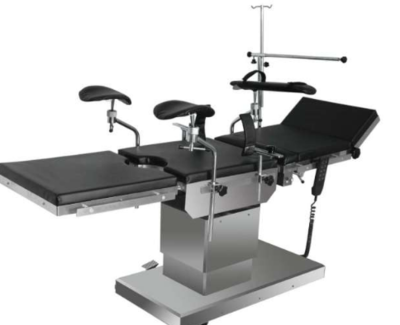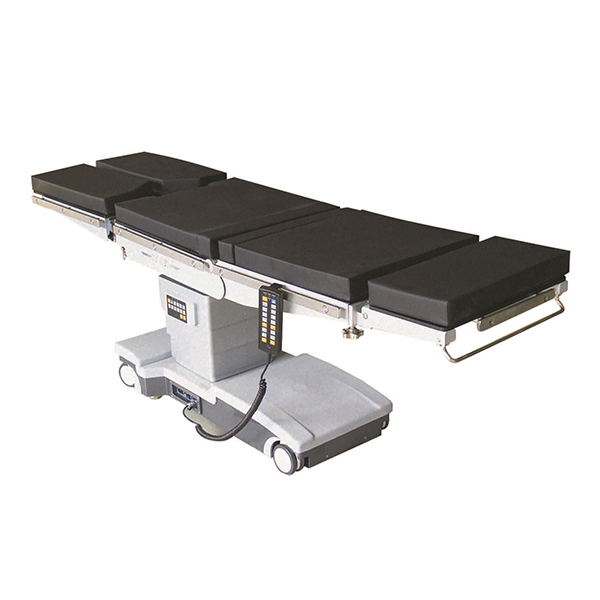Electric surgical bed is a key equipment in the operating room, and its failure may affect the surgical process. Common failures mainly focus on the power system, mechanical structure, control system, and accessories, as follows:
1、 Power system malfunction
Motor malfunction: The motor is the core that drives the operation of the surgical table. When it operates under high load for a long time or has poor heat dissipation, it may produce abnormal noise, decrease in speed, or even stop running. For example, frequent adjustment of the bed height or angle may cause the motor to overheat, triggering the protection mechanism and stopping work; The aging and short circuit of the internal coils of the motor can also cause power output interruption.
• Battery issue: Some surgical tables are equipped with batteries as backup power sources. If the batteries are not charged for a long time or if the charging circuit fails, it can cause the batteries to run out of power, making it impossible to switch to the backup power source in the event of a sudden power outage, which affects surgical safety. In addition, when the service life of the battery expires, there may also be situations where the power supply is unstable or unable to be supplied.
2、 Mechanical structural failure
• Stuck of lifting mechanism: If the screw, guide rail and other components in the lifting mechanism are not lubricated enough or foreign objects enter, it can cause the surgical table to jam, not move smoothly, or even get stuck and unable to move. For example, debris falling during surgery may enter the guide rail and cause mechanical jamming.
Loose connection of tabletop: The tabletop of the surgical table is composed of multiple parts that are spliced together. After long-term use, the connecting screws may loosen, causing the tabletop to shake and affecting the stability of surgical operations. In severe cases, the tabletop components may shift, posing a safety hazard.
Hydraulic system leakage: Operating tables driven by hydraulic pressure may experience hydraulic oil leakage due to aging or damaged hydraulic pipelines or seals, resulting in weak or abnormal movements such as bed lifting and tilting. At the same time, the leaked hydraulic oil may also contaminate the surgical environment.
3、 Control system malfunction
Control panel malfunction: Frequent operation of buttons on the control panel may result in poor contact, manifested as no response or delayed response from the bed after pressing the button. In addition, moisture and short circuits in the internal circuits of the control panel can also cause button function failure.
Remote control function failure: Surgical tables controlled by wireless remote control may not be able to operate the bed through remote control due to low battery power, signal interference, or remote receiver failure, requiring reliance on the control panel and affecting operational convenience.
Sensor abnormality: Some high-end surgical tables are equipped with position, pressure and other sensors. If the sensors are damp, damaged or improperly calibrated, it may cause the bed to be unable to accurately identify the position or overload, which may lead to misoperation or protective shutdown.
4、 Attachment malfunction
Failure of fixing devices: If the fixing devices of accessories such as restraint straps and instrument trays on the operating table are damaged, it will cause the restraint straps to loosen and the trays to shake, affecting the stability of patient fixation and instrument placement.
• Malfunction of adjustment components: For example, the adjustment knob or locking device of accessories such as side rails and leg supports may malfunction, which can cause the accessories to be unable to be fixed in the desired position and affect the placement of surgical positions.
These failures are often related to equipment aging, improper maintenance, frequent operation, or environmental factors such as humidity and dust. Regular maintenance, standardized operation, and timely maintenance can effectively reduce the occurrence rate of failures.
Post time: Jul-18-2025


